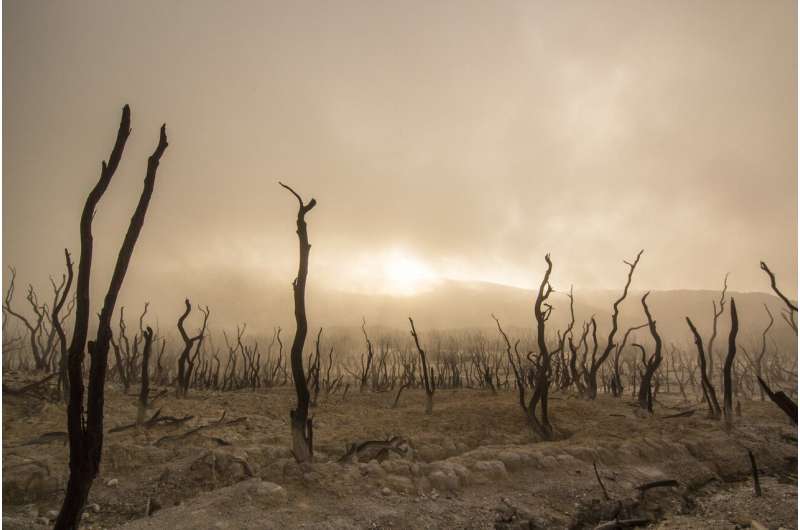Credit: CC0 Public Domain
The world is on track to breach a key global warming threshold, according to a new report.
There's now a 50-50 chance that the world will warm by more than 1.5 degrees Celsius over the next five years.
In 2015, chances were near zero.
Moreover, between now and 2026, there's a 93% likelihood that one of the next five years will be the warmest on record, knocking 2016 out of its current No. 1 spot, the World Meteorological Organization said in its report, released late Monday.
Even though the 1.5 degree C increase wouldn't last—this time—it could still cause irreversible changes, the scientists said. This echoed warnings in a February report from the Intergovernmental Panel on Climate Change, which laid out 127 ways that conditions could get worse, some permanently.
The WMO tapped the knowledge of the world's top climate scientists and culled data from 11 forecast centers and their highly accurate prediction systems to arrive at the conclusion in the report, the Global Annual to Decadal Climate Update.
"The 1.5°C figure is not some random statistic," WMO Secretary-General Prof. Petteri Taalas said in a statement accompanying the report. "It is rather an indicator of the point at which climate impacts will become increasingly harmful for people and indeed the entire planet."
The 1.5 deg C is the lower number arrived at by the Paris Agreement on Climate Change, which set long-term goals for all countries to reduce global greenhouse gas emissions so that temperatures would not rise above 2 deg C. Even the 1.5 deg C poses a risk, the Intergovernmental Panel on Climate Change has said.
While the prediction was grim, reaching this 1.5 deg C threshold is not the same as hitting the one signed onto in the Paris Agreement, scientists not involved in the report told The Associated Press. The Paris Agreement's figure would take much longer to know, given that it's a long-term average covering 20 to 30 years, they said.
"This is a warning of what will be just average in a few years," Cornell University climate scientist Natalie Mahowald, who was not part of the forecast teams, told AP.
"A single year of exceedance above 1.5°C does not mean we have breached the iconic threshold of the Paris Agreement, but it does reveal that we are edging ever closer to a situation where 1.5°C could be exceeded for an extended period," said lead author Leon Hermanson of the United Kingdom's Meteorological Office, which coordinated the team.
The temperatures the report used are "a little warmer" than what NASA and the U.S. National Oceanic and Atmospheric Administration (NOAA) use, NASA climate scientist Gvain Schmidt told AP, adding that he thought 10 years was a more accurate window.
What scientists did agree on was the need to keep reducing emissions.
"For as long as we continue to emit greenhouse gases, temperatures will continue to rise. And alongside that, our oceans will continue to become warmer and more acidic, sea ice and glaciers will continue to melt, sea level will continue to rise, and our weather will become more extreme," Taalas said. "Arctic warming is disproportionately high, and what happens in the Arctic affects all of us."
©2022 New York Daily News.
Distributed by Tribune Content Agency, LLC.
























